The Ethnic Motifs Woven Design Banarasi Saree is a classic and timeless piece of Indian heritage, known for its intricate designs and luxurious fabric. The Banarasi saree is one of the most celebrated traditional sarees, originating from Varanasi (Banaras), a city renowned for its rich cultural and weaving traditions.
Here’s a detailed breakdown of the Ethnic Motifs Woven Design Banarasi Saree:
1. Fabric Composition:
-
Silk Base: Traditionally, a Banarasi saree is made from pure silk, but modern variations can also include silk blends (with cotton, polyester, or other blends) for added comfort and durability. The silk gives the saree a luxurious sheen and a soft, smooth texture that feels indulgent against the skin.
-
Zari Work: The hallmark of Banarasi sarees is the use of zari (gold or silver thread). The intricate zari work is often woven into the fabric, giving the saree a rich, opulent finish. Zari threads can be made from real gold or silver, but more commonly, they are made from synthetic metals.
2. Woven Design (Ethnic Motifs):
-
Traditional Motifs: The ethnic motifs on a Banarasi saree are deeply rooted in Indian culture. These designs often include motifs like paisleys, floral patterns, peacocks, geometric shapes, and temple borders. These elements symbolize prosperity, spirituality, and harmony.
-
Paisley (Ambi): One of the most iconic motifs in Banarasi sarees, representing fertility, auspiciousness, and prosperity.
-
Peacock Designs: A symbol of beauty and elegance, peacocks are frequently used in Banarasi weaving.
-
Floral and Vine Patterns: These motifs reflect nature’s beauty, symbolizing growth and vitality.
-
Geometric Patterns: Often used in the borders and pallu (end of the saree), geometric motifs offer a contemporary twist while keeping the traditional feel.
-
-
Intricate Woven Technique: The weaving technique used in Banarasi sarees is brocade (referred to as “Kinkhab” in Banaras), where zari threads are woven into the fabric using a jacquard loom to create elaborate patterns. The result is a rich texture and a fabric that feels both luxurious and regal.
3. Color Palette:
-
Vibrant Colors: Banarasi sarees are often available in a wide range of colors, from rich jewel tones like emerald green, royal blue, red, purple, and golden yellow to more subdued shades like ivory, cream, pastels, and peach.
-
Zari Contrast: The zari work usually contrasts with the base color of the saree. For instance, a deep red saree may feature golden zari, while a royal blue saree might be adorned with silver or gold zari work.
4. Design and Structure:
-
Pallu (End Piece): The pallu of a Banarasi saree is often the most elaborately designed part, showcasing intricate motifs and zari work. This part of the saree is draped over the shoulder, making it the focal point of attention.
-
Borders: The borders of Banarasi sarees are typically broad and feature either simple geometric patterns or complex, detailed designs with motifs like floral vines or paisleys. In many Banarasi sarees, the borders and pallu are heavily embroidered with zari to create an eye-catching contrast with the rest of the saree.
-
All-over Woven Design: Some Banarasi sarees feature an all-over woven design, where motifs like floral patterns, paisleys, or peacocks are scattered across the entire fabric. Others might feature a more minimalistic design in the body of the saree with elaborate borders and pallu.
5. Occasions:
-
Weddings: Banarasi sarees are a quintessential choice for weddings, both for the bride and guests. Their intricate weaving and rich fabric make them a symbol of royalty and elegance.
-
Festivals: Ideal for celebrations like Diwali, Navratri, Durga Puja, or Eid, where vibrant colors and intricate designs are celebrated.
-
Formal Events: Banarasi sarees also shine in more formal settings, such as receptions, gala dinners, or cultural events, where elegance and tradition are appreciated.
-
Cultural and Religious Events: Their ethnic motifs and cultural significance make them ideal for attending religious ceremonies, poojas, and family gatherings.
6. Styling Tips:
-
Jewelry: Pair your Banarasi saree with traditional gold jewelry (such as heavy necklaces, chandbalis, or bangles), as gold complements the rich zari work and gives the outfit a regal look. Kundan or polki jewelry can also enhance the luxurious appeal.
-
Blouse Style: The blouse that accompanies a Banarasi saree is usually simple but can be tailored in various styles such as a high-neck blouse, boat-neck blouse, backless blouse, or a choli style with embroidery to match the saree.
-
Footwear: Traditional footwear like mojris, kolhapuris, or paduka works wonderfully with Banarasi sarees, adding a touch of ethnic charm. If you prefer heels, opt for classic pointed-toe pumps or block heels for comfort and elegance.
-
Hairstyle: A traditional bun adorned with fresh flowers or a side braid adds to the elegance and complements the grandeur of a Banarasi saree.
7. Care Instructions:
-
Dry Clean Only: Due to the intricate zari work and delicate fabric, Banarasi sarees should be dry cleaned to avoid damaging the motifs and the fabric.
-
Storage: Store your Banarasi saree in a saree pouch or an organza bag to protect it from dust and moisture. Keep it away from direct sunlight to prevent color fading.
-
Avoid Scratching: The zari threads can be prone to scratches, so handle the saree with care, especially while wearing or folding it.

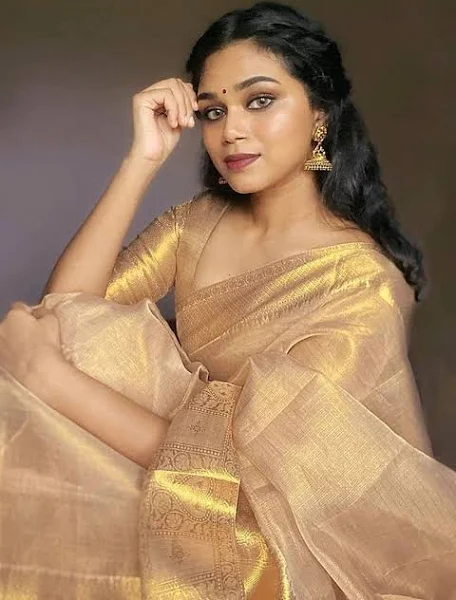
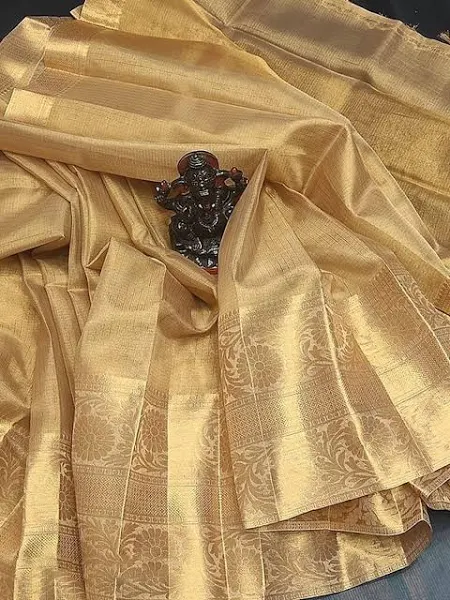
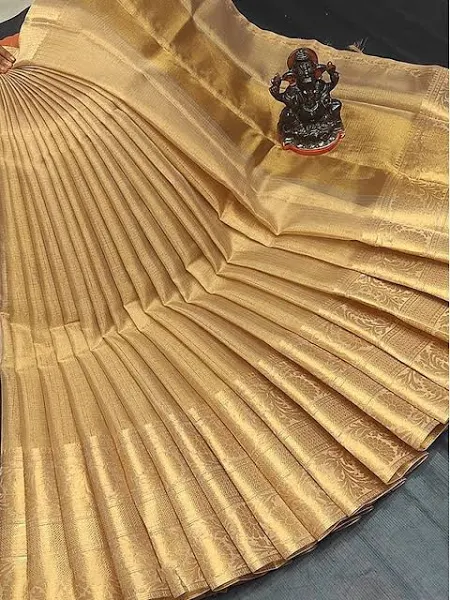
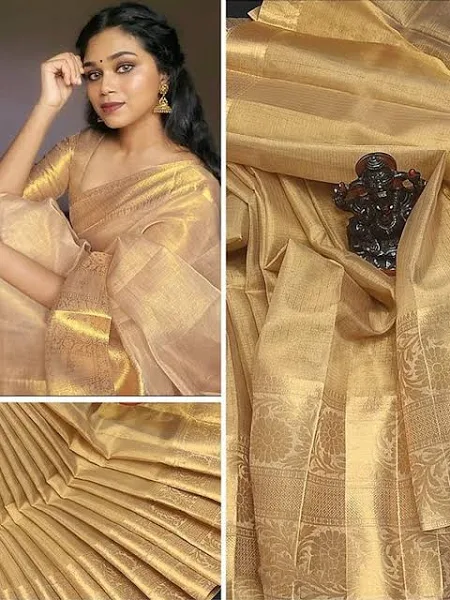
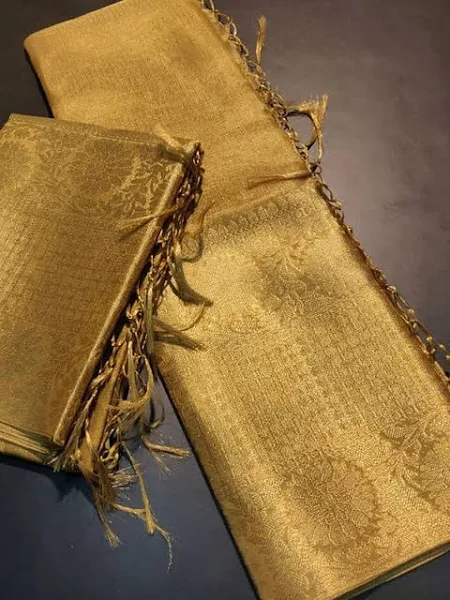
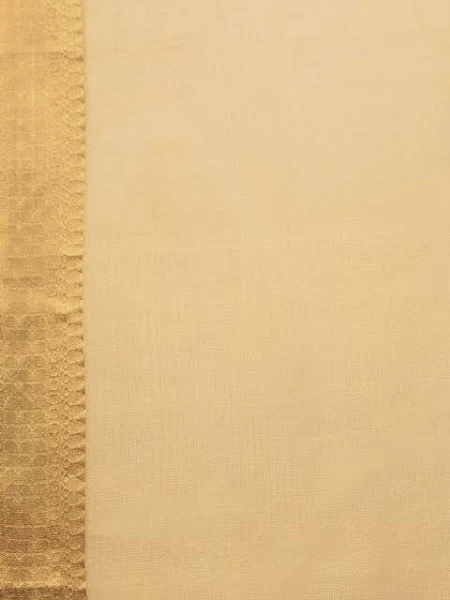
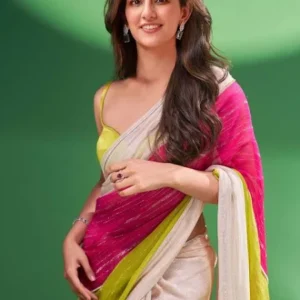
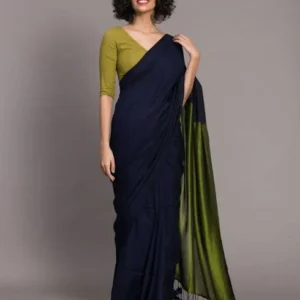
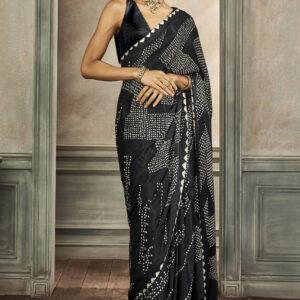
Reviews
There are no reviews yet.